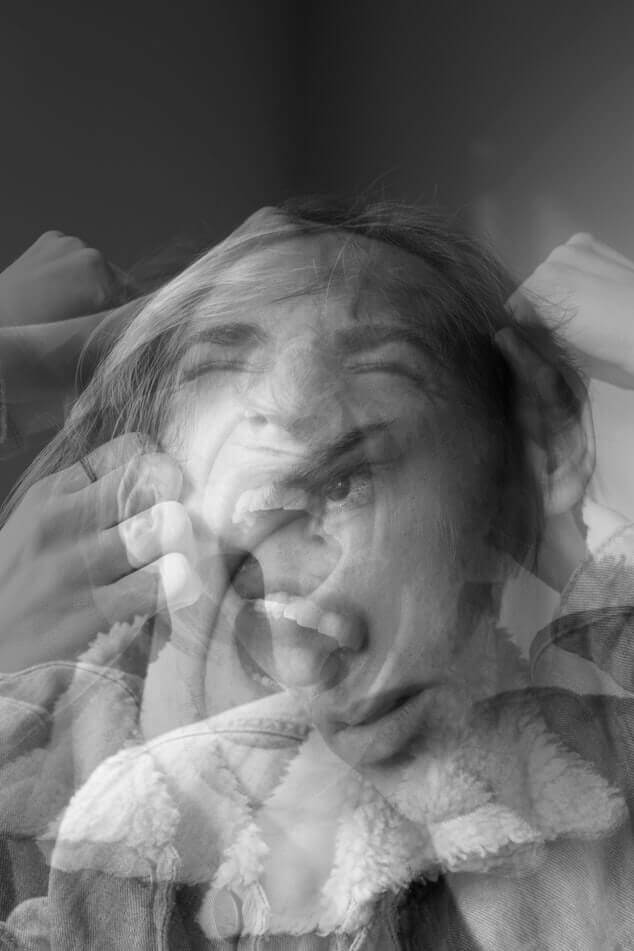A Guide to Split Personality Disorder : Symptoms & Causes

Last weekend, I watched a movie, Split (2016), wherein the man kidnapped three girls and was later known to be diagnosed with 23 distinct personalities. Likewise, with a similar concept, I got exposed to a movie by famous actor Leonardo DiCaprio called “Shutter Island.” In the respective film, the actor was sent to an isolated mental hospital for an investigation of a bizarre disappearance. As the actor’s quest continues, he begins to have strange dreams and reveals that he is a patient after murdering his wife. These movies are the example of “Split Personality Disorder.”
In medical terms, Split Personality Disorder is also known as Multiple Personality Disorder or Dissociative Identity Disorder. People with such Disorder, develop one or more alternate personalities that function with or without the awareness of actual personality.

Split Personality Disorders are mental disorders involving breakdowns and disruptions of memories, awareness or consciousness, and perception of identity.
The symptoms associated with Split Personality Disorder can be mild in the beginning but can be severe where they interfere with the general functioning of a person at work or personal life.
Dissociative Disorder starts when a person goes through some traumatic, violent, or painful experiences or situations that are complex enough to assimilate to their conscious self.
In this blog, we have focused on the simple guide to recognizing someone having or experiencing “Split Personality Disorder.”
Also Read: Psychopath vs Sociopath: What’s The Difference?
Causes of Split Personality Disorder
The critical feature of Split Personality Disorder is a “history of trauma.” Almost all cases recorded are related to the history of abuse or exploitation. Such traumatic incidence includes severe physical, sexual, and emotional abuse. Additionally, the Disorder can also be referred to as natural accidents, disasters, and wars. In some instances, loss of parents at an early age or prolonged periods of isolation (might be because of sickness) contributes to the causes of Split Personality Disorder or what do you call as Multiple Personality Disorder.

People with Split Personality Disorder generally disconnect themselves from traumatic or stressful situations. They create distance from an awareness of what is happening around. With time, this dissociation becomes a defense mechanism used to avoid emotional and physical pain. To eliminate painful memories, people relatively prefer ‘disassociation’ for a healthy level of functioning. Additionally, episodes of Split Personality Disorder occur by a variety of symbolic and real traumas.
Key points related to the causes of Split Personality Disorder are:
- History of Trauma
- Physical, sexual or emotional abuse at early stages of life
- Loss of loved ones in accidents, natural disasters or wars
- Prolonged periods of loneliness
Symptoms of Split Personality Disorder
The most common symptom of Split Personality Disorder is to have two or more distinct personalities. People with such Personality Disorder may experience Amnesia, which completely takes control of the person’s behavior. The fact is each alter (additional personality) has distinct traits, history, and a different way of thinking and relating. Alters can be of a different name, manner, preference, and gender.
When other alter becomes dominant, the individual becomes unaware of their memories and states. A reminder of trauma or excessive stress triggers the switching of alters. Split Personality Disorder creates chaotic and problematic life in work and personal relationships.

The common symptoms of Split Personality Disorder are:
- Severe headaches or pain in other body parts
- Altered levels of functioning
- Derealization
- Depersonalization
- Depression
- Mood swings
- Anxiety
- Substance abuses
- Sleeping and eating disturbances
- Memory loss
- Distortions
- Self-injuries
- Increased risk of suicides
Complications Related to Split Personality Disorder
- Suicidal behavior and thoughts
- Self-harm
- Sexual dysfunction
- Sleepwalking or insomnia
- Lightheadedness
- Seizures
When to See a Doctor
If you find any loved one or closed family members with few or all of the symptoms of Split Personality Disorder, you should make an appointment with the doctor as early as possible.
See the doctor or mental health provider when:
- Someone behaves as two or more personalities or identities.
- When you find great haps in memories.
- Extensive use of alcohol or drugs with anxiety.
- Problems in personal life and work with related symptoms.

Takeaway
If you find your loved one or family member experiencing such symptoms or behaviors, you should encourage them to visit a doctor as soon as possible.
Hope this information helps!
Thanks for reading.
You May Also Like:
Psychopath vs Sociopath: What’s The Difference?
EUPD – Emotionally Unstable Personality Disorder and Its Symptoms





















Fight club is also a very famous example for split personality disorder.